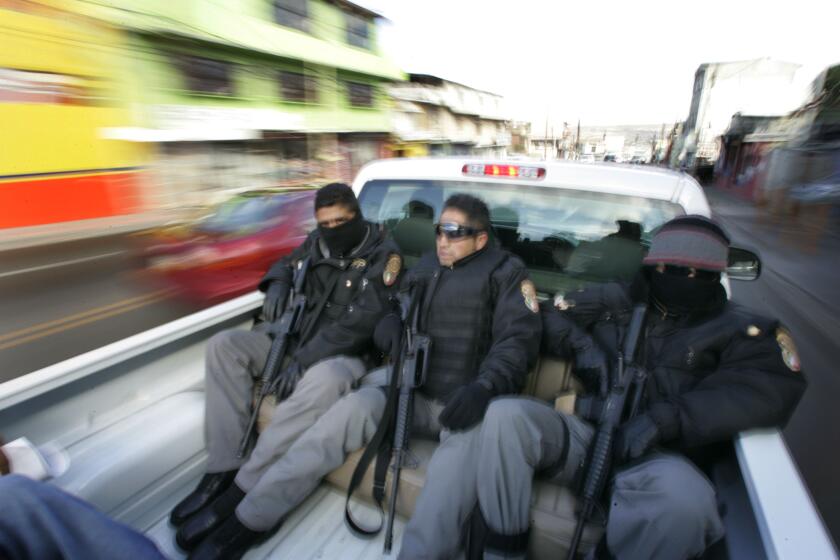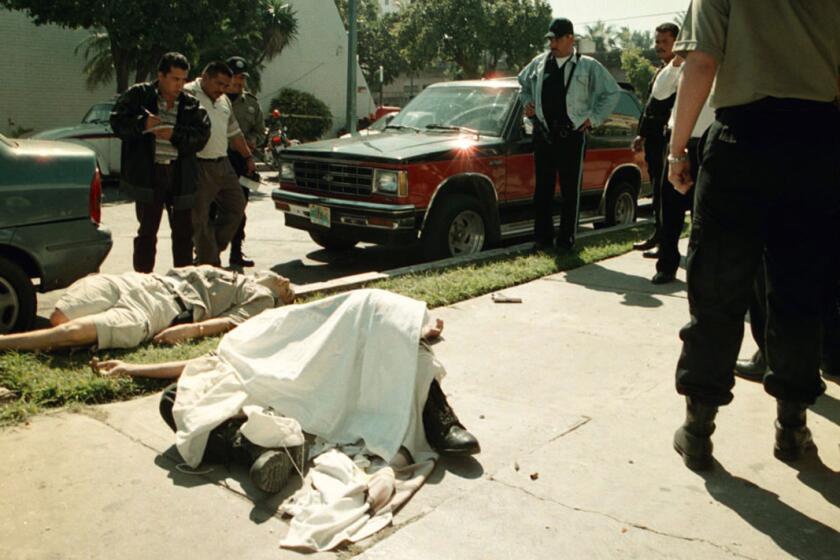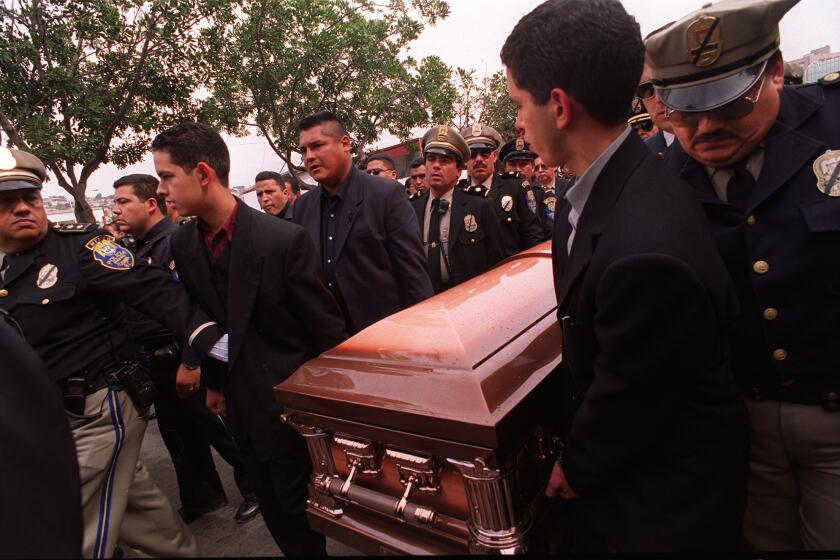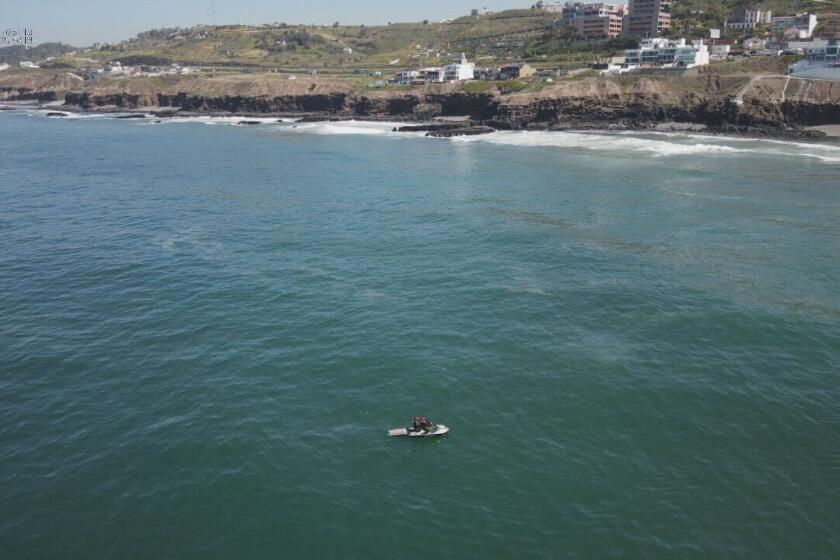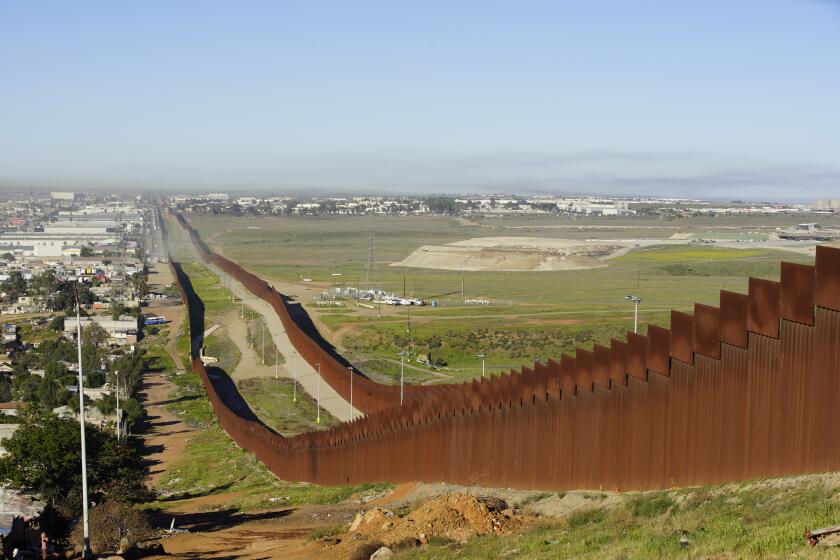Tijuana’s CETYS University wants to be first Mexican member of NCAA
- The NCAA on January 20th overwhelmingly agreed to allow Mexican colleges and universities to apply for Division II membership.
- The private CETYS University in Tijuana is celebrating the decision, angling to be the NCAA’s first Mexican member.
- The school’s teams already have been crossing for “friendly games” with U.S. schools, including San Francisco State University, Cal Poly Pomona and Azusa Pacific.
- NCAA supporters say Mexico’s inclusion can enrich the experience of student athletes.
Here’s the full story.
One rainy afternoon last week, as evening fell over the campus of CETYS University in northern Tijuana, a dozen young women were hard at practice in the brightly lit gym, their soles squeaking on the wood floor, their voices echoing as they executed passes, shots, rebounds.
Already home of the top-ranked women’s college basketball team in Mexico, this small private university is looking northward for a new challenge: becoming the first Mexican school admitted to the National Collegiate Athletic Association, the NCAA.
Until recently, competing against U.S. teams in college-level sports wasn’t even a option for a Mexican university. But on Jan. 20 in Indianapolis, members of the NCAA overwhelmingly agreed to allow Mexican colleges to apply for Division II membership. Five years after rejecting a similar proposal, the vote among division delegates was overwhelming in its support, 254 to 45.
At CETYS, the excitement has been palpable—coursing from the president’s office to the floor of the school’s 1,500-seat gym, the pride of the university’s Tijuana campus. Coaches and administrators say the NCAA vote opens an unprecedented opportunity, one the school is determined to pursue, much to the delight of Zorros players and their fans.
“You can grow as an athlete, and as a team,” said Myriam Lara Ackerman, the 23-year-old center and women’s basketball captain. “It’s a really good goal for the institution, and a really good goal for us.”
The six-foot, two-inch athlete is the team’s tallest and most experienced member, and has set her sights on playing professionally in Europe, once she completes her master’s in business administration.
With CETYS teams already routinely crossing for “friendly games” with California schools such as Cal Poly Pomona, Azusa Pacific and San Francisco State University, the university is busy laying the necessary groundwork to apply for NCAA membership. It is beefing up its sports budgets, currently at $1.75 million, and is preparing to increase its number of teams to 10, a must if they hope to even be considered.
Last year, the school hired its first athletic director, Enrique Lechuga, a California native with a master’s in athletic administration, a former pitcher in the Chicago White Sox minor league system who subsequently spent seven years playing in the AAA Mexican League.
For young Mexican student athletes, joining the NCAA would provide a powerful incentive. “You grow up in Mexico, and you always see ESPN sports, it’s all the American sports, and you grow up thinking, ‘I want to play there’,” Lechuga said. “I think we have really good teams. Some teams are up to par with American schools, other teams, we’re still building.”
Marcos Eduardo Almonte Talamantes, 24, who plays center field on the school’s baseball team, is on a student-athlete scholarship finishing his computer science degree after dropping out of school for two years to play for the Mexico City Diablos Rojos team. Joining the NCAA would offer an alternative to talented and motivated young players, who often find they have to leave school to play baseball.
“I think a lot of us would turn around and say, “I can play university baseball at a high level,” Almonte said.
CETYS has already overcome a basic hurdle for NCAA membership — that of U.S. academic accreditation — and is one of only five Mexican universities with that distinction, according to the school’s president, Fernando León García. It was conferred in 2012 by the Western Association of Schools and Colleges, after seven years of effort by the university. Following a review last year, accreditation was extended for another ten years.
Though known as CETYS, the school’s full name is Centro de Enseñanza Técnica y Superior. Its undergraduate population numbers about 3,500 students, divided among three campuses in Mexicali, Tijuana and Ensenada. Another 1,500 students are enrolled in graduate programs. Though its focus is engineering and business, the school also offers degrees in psychology and the humanities.
CETYS has been collaborating academically with a range of U.S. colleges and universities, including University of California San Diego, San Diego State University and National University, and athletic ties are a natural extension of those links, León García said. The school offers a joint degree program with City University of Seattle that allows students to graduate with a U.S. and Mexican degree, and includes study in a third country, in most cases the Czech Republic.
“Development of the full individual is important,” said León García, a Mexicali native and CETYS engineering graduate who went on to earn a doctorate in educational administration and policy analysis at Stanford University. Since becoming president in 2010, León García has pushed hard to raise the school’s profile.
The NCAA’s membership is made up of 1,117 colleges and universities, divided among three divisions. Just over 300 are Division II schools, generally smaller and with fewer resources spent on athletics programs than those larger colleges with Division I status.
The NCAA’s only international member is a Division II school, Simon Fraser University in British Columbia, which joined in 2012 — four years after the NCAA delegates agreed to allow Canadian schools to apply.
“I believe our participation has enriched the athletic culture and enlivened competition,” said the university’s president, Andrew Petter in a written statement. “If and when a Mexican school emerges that meets the test for NCAA membership, we stand ready to assist and work with others to help the NCAA to reach one more North American country.”
Five years ago, an initial proposal to open the door to Mexican schools was defeated by four votes. Terri Steeb Gronau, vice president of NCAA Division II, said it lacked the focus that last month’s proposal rectified.
“There wasn’t really a school identified or a conference identified,” she said. But last month, three west coast conferences came together in favor of allowing Mexican schools to apply: The Pacific West Conference, the Greater Northwest Conference and the California Collegiate Athletic Association.
Opening the door to Mexican schools, “is a benefit, it can provide great cultural experience for our student athletes, it can knock down a lot of misconceptions that occur in the current political climate,” said Mitch Cox, the CCAA’s interim commissioner. “But you also have to look at the practicality of things and make sure that your t’s are crossing and your i’s are dotted, and everything is good to go. We’re way away from that point.”
Though the NCAA vote went into effect immediately, no Mexican schools had applied for membership by this year’s Feb. 1 application deadline. To even apply, a school must offer ten sports during an entire school calendar year.
CETYS still falls short of the NCAA minimum requirement, though its programs include men’s and women’s basketball, men’s and women’s volleyball, men’s and women’s track and field, baseball, and U.S.-style men’s football. In the best case scenario, the school could submit its application in February 2020.
There is also a practical obstacle of making it across the border to play with U.S. teams, or persuading U.S. teams to come south. “We have our athletes make a line, like everybody else,” said León García, “and they wait as long as necessary. You have to make sure you give yourself two hours, give or take.”
If the border becomes a major stumbling block for U.S. teams, “we could make our base for home games in either south San Diego or Imperial counties,” the president said. “There are ways to minimize those logistical barriers, if they are true barriers.”
sandra.dibble@sduniontribune.com
Get Essential San Diego, weekday mornings
Get top headlines from the Union-Tribune in your inbox weekday mornings, including top news, local, sports, business, entertainment and opinion.
You may occasionally receive promotional content from the San Diego Union-Tribune.



